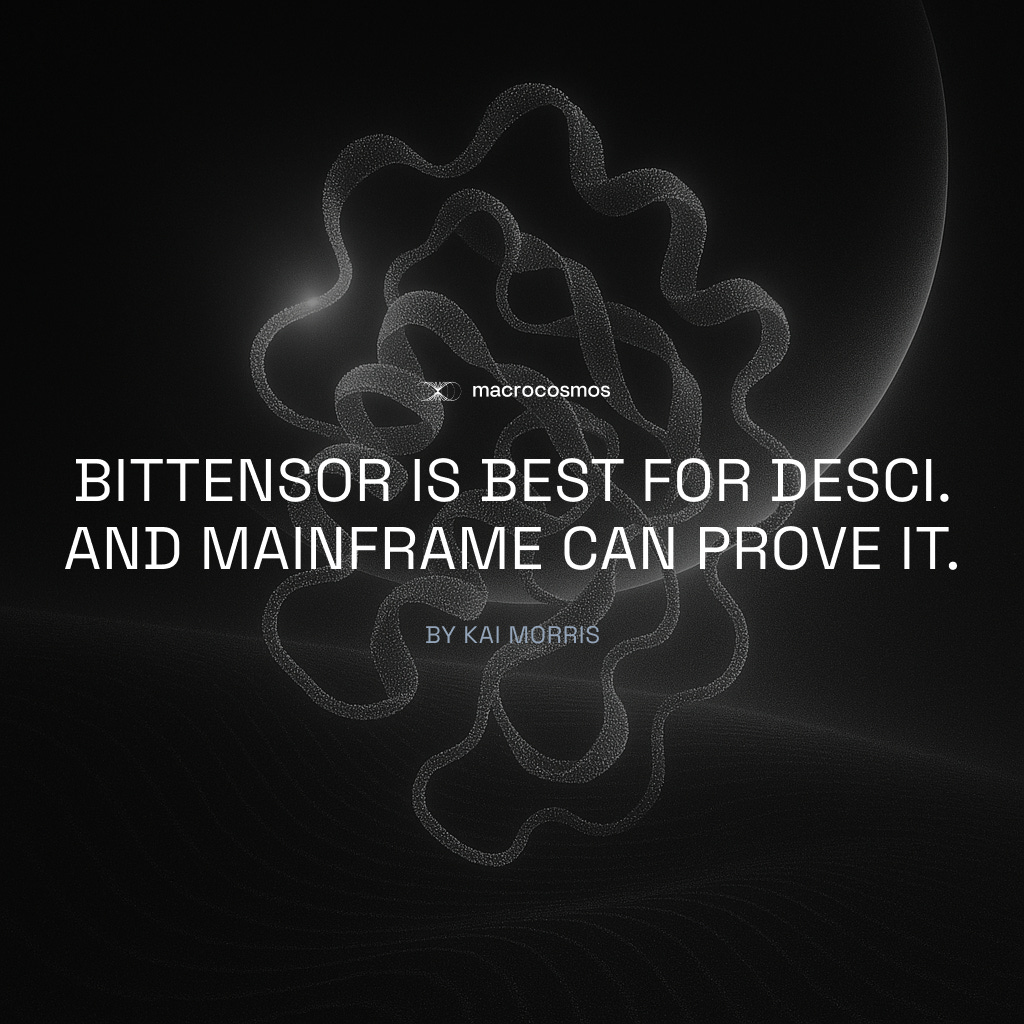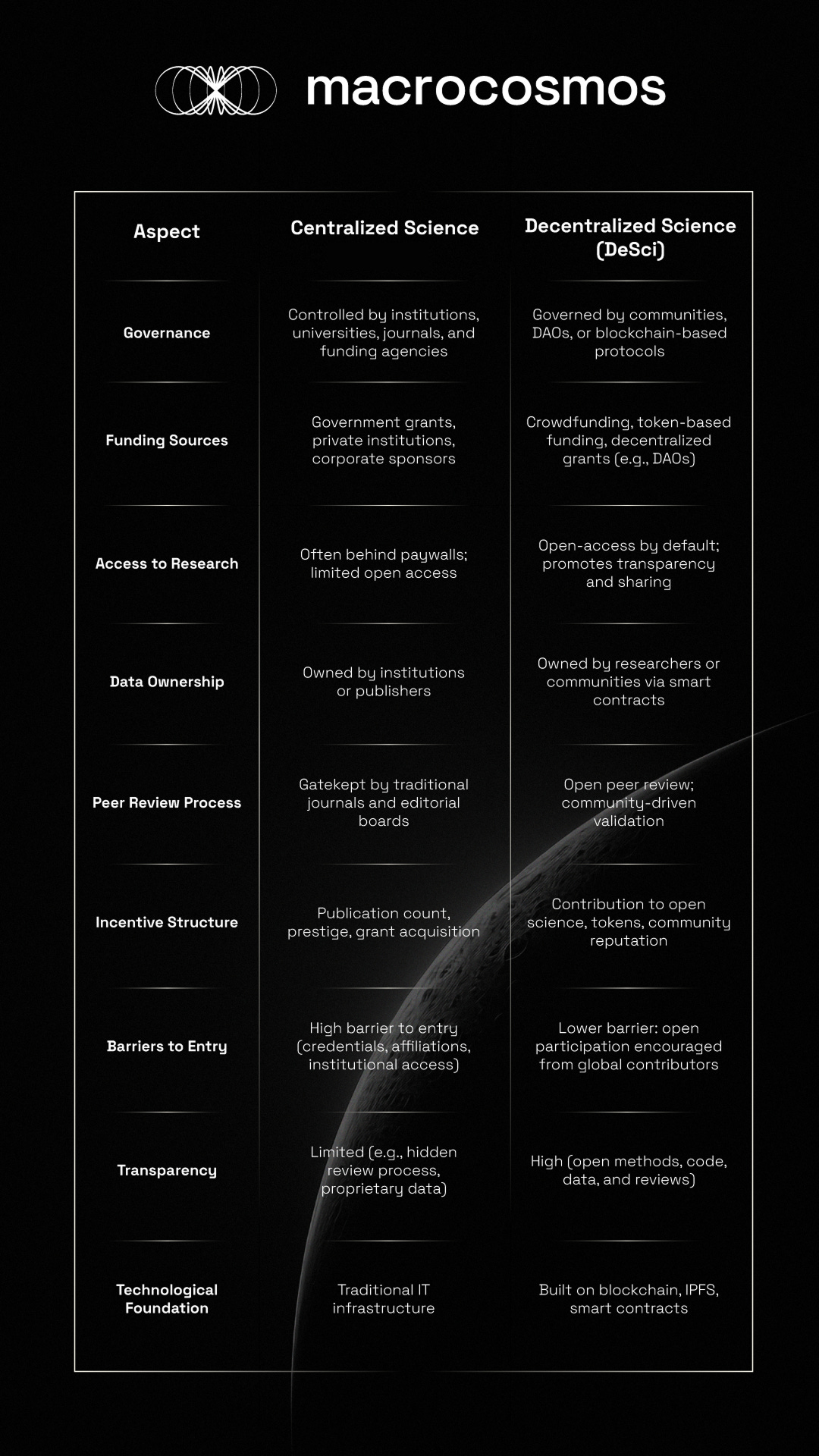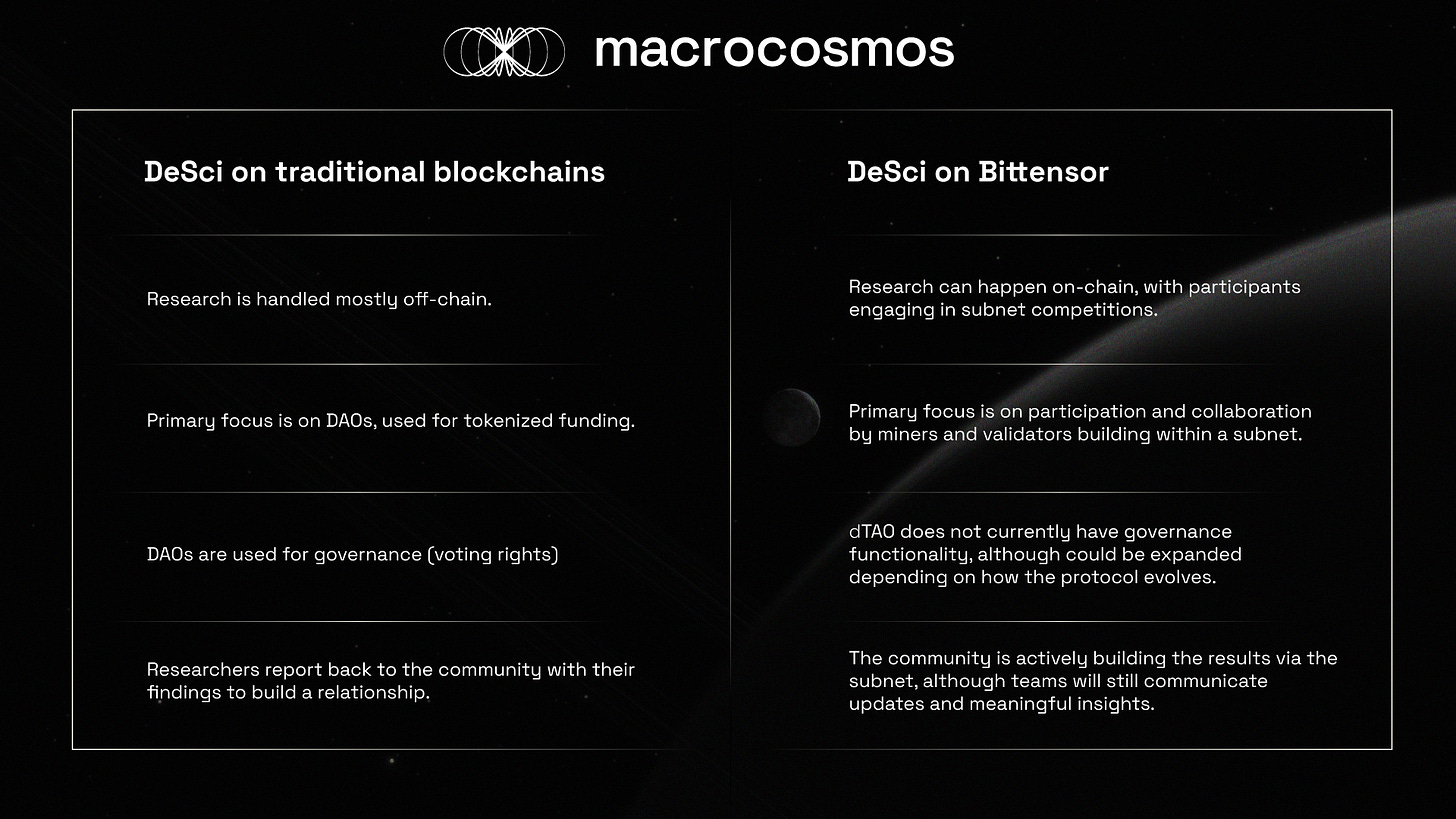Bittensor is best for DeSci. And Mainframe can prove it.
Science needs decentralisation for the same reason that business does. But without the right blockchain protocol, DeSci projects will struggle to compete. SN25 set out to change that.
Scientific research is vital for the economy - and is just as susceptible to collusion, regulatory capture, and misaligned incentives as business itself.
DeSci enables scientists to harness the blockchain, so that the core components of research - data, funding, and knowledge - are as transparent as possible. Yet DeSci is limited by the protocol on which it’s built.
Scientific research depends on the credibility of its data, the sources of its funding, and the quality of its participants.Without strong mechanisms for validating data, incentivising participation, and generating funding, research on the blockchain will struggle.
Until recently, the majority of DeSci projects were built on Ethereum. For all its virtues, Ethereum does not optimise for any of these. Bittensor does.
SN25, Mainframe, become the protocol’s first decentralized science project in June 2024. By pioneering protein folding, we sought to prove Bittensor’s suitability to science. And in less than a year, we modelled more proteins than Folding at Home, which began in October 2000.
But science is complex, and the needs of scientists change. In order to attract valuable research to Bittensor, we must first understand what scientific research requires, the landscape in which it operates, and the potential
What is DeSci?
Decentralized science extends beyond blockchain practices - it’s the process of engaging in the scientific world in a distributed and collaborative way, where research isn’t dictated by a small few, but is spread across communities. It might mean crowdsourcing funding via cryptographic methods, publishing and building in an open environment where the public can see and comment, or initiating research that lives on an immutable chain. At its core is the push to break the wall between scientific contributions and the individuals they relate to.
The most common form of DeSci is where academics build DAOs, or decentralized autonomous organizations, with participants choosing research they’re interested in, using cryptocurrency as both a means of voting and funding. Ecosystems like Ethereum, Base, or Solana allow projects to mint a token that gives governing rights, but which also holds its own economic value. The incentive for holding these tokens is based on the premise that if the DAO is successful in its work, they’ll attract the best researchers, equipment, and outside finances - driving up the price.
DAOs are bootstrapped by incubators and aggregates like Molecule.xyz and Bio.xyz, helping them to reach the right audience and scale. Some DAOs utilize IP NFTs, tokenizing a particular type of molecule, drug, or research, acting as a financial instrument on-chain.
DAOs are the most popular expression of DeSci, to the point where many think this is the be-all-and-end-all of the field. In reality, DeSci can take many pathways - and there’s a growing frustration with the drawbacks of DAOs. Community funding helps people drive research towards what’s important to them, but it does little for execution. There must be appropriate infrastructures for long-term incentive alignment. That’s where Bittensor steps in.
The new wave of on-chain science
On Bittensor, you can gear distributed compute towards precise research goals. Miners contribute to set tasks, with validators checking their contributions for quality. Rather than focusing on crowdfunding, people can leverage the protocol to perform scientific tasks, leveraging a competitive pool of miners to propel continuous progress.
The upshot: a decentralized method of actually conducting research, rather than simply a voting mechanism and a funding tool. While DAOs definitely have their place, at their core they’re a system of raising capital, rather than a machine designed for leveraging resources, generating meaningful intelligence, and powering relentless improvement.
Bittensor is an intelligence engine - point it towards the work and with the right incentive it can be done. In mid-2024, we chaperoned Bittensor's first steps into DeSci - with the launch of SN25, we showed the world how to fold proteins on-chain. Over time, we expanded it to include docking. Now, it's being designed to tackle a range of DeSci problems. Scientists see the vision, and they're supporting the creation of strict, codified and meticulous competitions that bring the type of narrow results needed in STEM - all whilst being built using open and on-chain methods.
Bittensor’s place in science
As of June 2025, a year since SN25’s launch, there are four DeSci subnets, focused on life sciences and protein folding, drug discovery, cancer research, and graph optimization problems. That’s small compared to other networks, but Bittensor functions a little differently. There’s a higher threshold for interdisciplinary knowledge - teams need a clear pathway towards breakthroughs in the scientific world, plus a strong commercial proposition and a solid grasp of Bittensor’s ecosystem, which is based on the fundamentals of game theory.
That’s a high bar, but the results are worth it. Mainframe exemplifies this. Our partnership with Rowan Scientific, a chemical computation startup, has led to the generation of high quality data via density-functional theory (DFT) for neural network potentials, used in bioorganic simulations. Mainframe allows Rowan to aid in drug discovery and materials science so they can train further neural network potentials, used to approximate the energy of a system of atoms.
Rather than raising funds via DAOs, scientists can harness a distributed pool of miners, setting up precise competitions that incentivize the necessary computations, which in turn propels continuous change. Hands-on experience, relentless improvement.
The future of DeSci
This is just the start. Researchers see the potential in Bittensor - they’re beginning to understand that its architecture is ripe for expanding the scientific space. And what’s more, it’s not all tied to a token’s success. A subnet’s merits are related to its infrastructure, precision, and team. As Bittensor expands, expect to see more decentralized science projects emerge.
DAOs will always have a place, but researchers are coming to learn that decentralization can support their work beyond tokenization. Mainframe revealed what’s possible - and researchers are starting to notice.
To learn more about docking, protein folding and Mainframe, come and chat in our Discord and Telegram.






